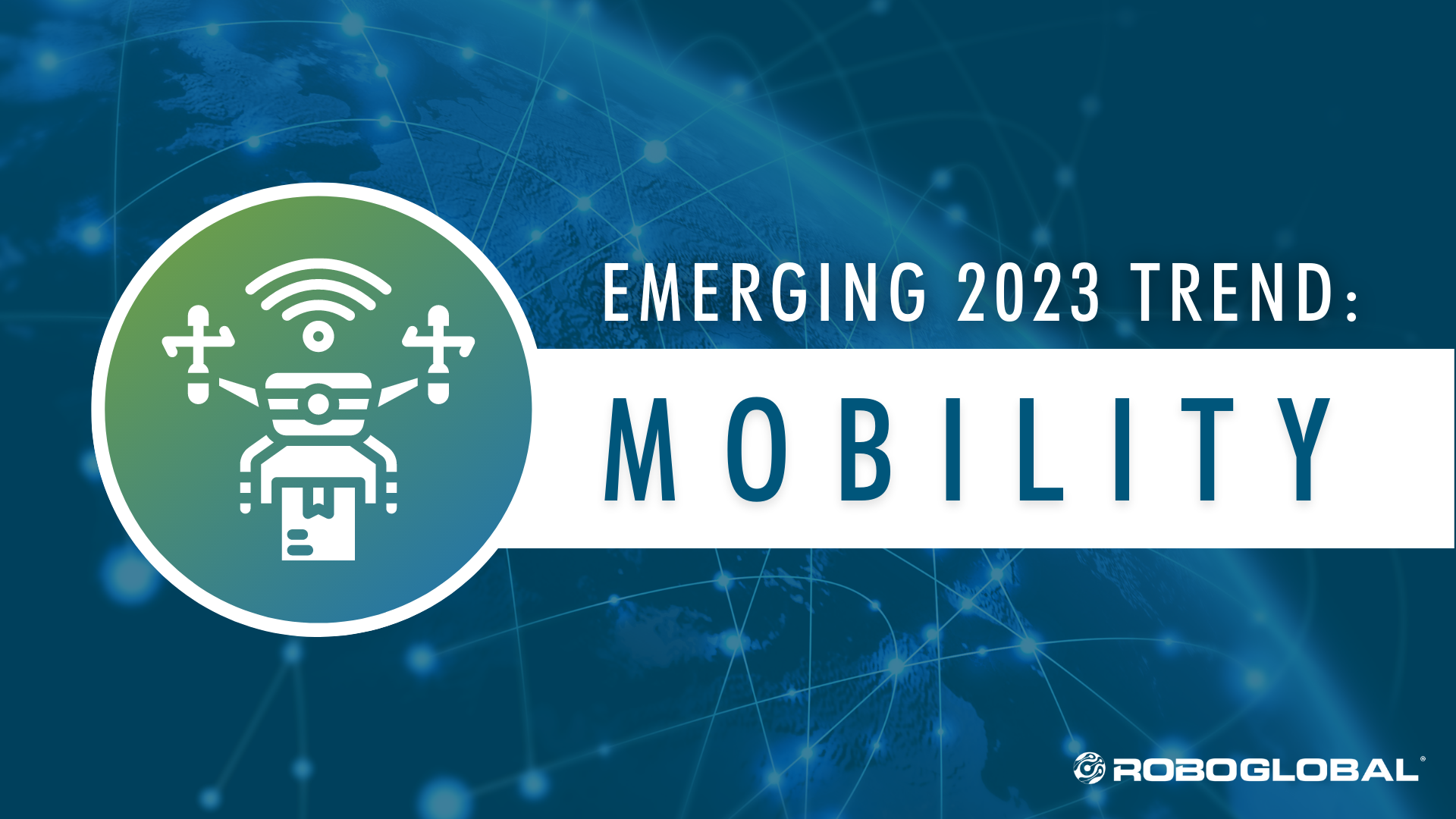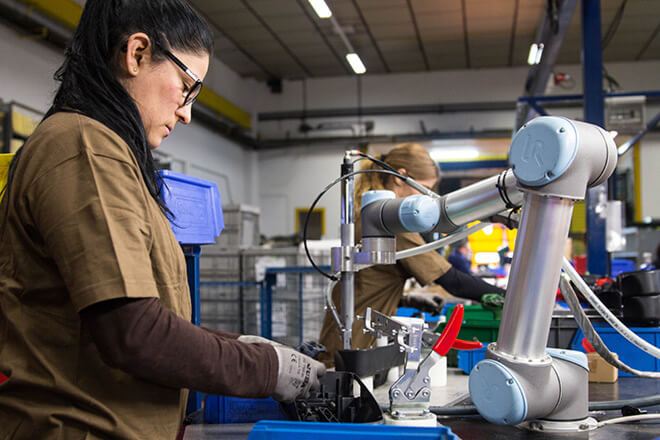By Stu Shepherd, Universal Robots
It’s a thrilling time to be working in the world of robotics.
That may seem like a given. After all, every day the headlines are filled with new breakthroughs in robotics, and it seems like we humans are finally ready to jump on board. New research from NPR and Edison Research tells us that as of January 2018, one in six Americans now own a smart speaker, up 128% from just a year ago. Amazon uses robots extensively to accelerate its supply chain and make single-day and same-day delivery a reality for customers around the world. Giant Food Stores is introducing robotic assistants—complete with googly eyes—in every one of its 172 stores, and Walmart is releasing a fleet of robotic janitors to do everything from mopping the floors to collecting data in its stores. And while our cars may not be fully self-driving (yet), robotics, automation, and AI are making our vehicles safer and smarter than ever.
And yet it isn’t these consumer-facing robots that make me excited to go to work every day. What has me energized and eager to see what’s next are the amazing things I get to witness far from the public eye—from my vantage point inside Universal Robots. From here, I can see how businesses large and small are using cobots to change the way the products we rely on every day are designed, manufactured, and delivered.
Unlike traditional industrial robots, cobots are limited in both power and speed, and they are applied to industry-approved safety standards to avoid human injury. Capable of being easily programmed to complete multiple tasks, cobots are designed to assist human beings—not take the place of human workers. In many cases, the cobot takes the form of an arm, providing the worker with an extra set of hands. Cobots protect human workers by reducing the risk of injury from dangerous jobs and repetitive movements, and they improve overall equipment efficiency—all while enabling human workers to get their jobs done faster and more easily than ever before.
It all started a decade ago, in December of 2008, when Universal Robots sold the world’s first commercially successful collaborative robot—or cobot—to Linatex, a Danish supplier of technical plastics and rubber for industrial applications. Cobots were in their infancy at the time, and few people aside from a small handful of robotics engineers and developers had any inkling of the true potential of these small, nimble robots. Linatex recognized that potential and took a leap of faith, installing their shiny new cobot not in a safety cage apart from other workers, but right on the factory floor. Working together, the Linatex cobot and a human workforce instantly took robot-human collaboration to a whole new level. The age of the cobot had arrived.
Ten years later, the market for cobots has exploded. In 2018 alone, the cobot market grew by more than 60%, nearing $500M in global sales. As the fastest growing segment of industrial robotics, global annual revenues of collaborative robots are forecast to reach $7.6B by 2027.[1]
That’s great news for businesses large and small, and yet it has raised the red flag for workers who worry that the wave of robots entering the workforce will bring more harm than good—at least when it comes to employment. By automating and streamlining both skilled and unskilled tasks, many workers see robots and cobots alike as a mechanical workforce that is coming to “take our jobs.”
What’s interesting is that, in reality, demand for manpower is actually outpacing supply. Baby boomers are retiring, and Gen-X, Gen-Y, and Millennials are not interested in manufacturing and warehouse jobs. There simply aren’t enough human workers to get the job done. As a result, even companies who never viewed robotics as a viable solution in the past are suddenly clamoring for help. Cobots are making that help highly accessible and affordable, opening the door for small- and mid-sized enterprises (SMEs) who can now use advanced technology to supplement a team of one, two, or ten workers.
So are robots really poised to take our jobs? Yes. And no.
According to recent estimates by the World Economic Forum’s 2018 Future of Jobs Report, while it’s true that jobs are likely to be lost as companies shift to more automation—as many as 75 million over the next four years—it’s also true that as many as 133 million new jobs will be created in the same period of time. What is shifting is the division of labor between man and machine, and collaborative robots sit smack in the middle of that transition. To see this changing landscape in action, consider these two scenarios:
The year is 2016.
As you look down on the massive factory floor of an automobile manufacturer, you can see large, industrial robots, dedicated to specific tasks, each contained within a safety cell—a large gated cage—to keep humans at a safe distance from the dangerous mechanisms that are working to dramatically accelerate production. Every few hours, a worker shuts down a nearby robot, opens the cage, recalibrates a control or makes other corrections or performs maintenance, closes the cage, and production starts up again. Perhaps the adjustment was to accommodate a different part, a new color of paint, or a completely new product line. Regardless, both the human worker and the robot have brought production to a halt to accommodate a change—for anywhere from 5 minutes, to an hour, to weeks at a time.
Fast forward to 2019
In this scenario, the picture is entirely different. You’re now looking into a small shop with just a handful of human equipment operators. Next to each human is a small, robotic arm that is quickly applied and easily programmed by the same human equipment operator (not an automation engineer) using a ‘place and position’ method that records the precise, repetitive process. The robot may only produce a small batch of parts, or it may be creating a program that is transferred to other robots to ‘train’ them to do the same job. Its robotic arm holds the part to be processed in an off-the-shelf gripper and loads it into the production equipment. It then conducts quality tests and measurements, while providing the necessary force, repetition, and accuracy to do the job reliably. Human co-workers interact when necessary, while safety features like force feedback and collision detection keep them safe at all times. The operators and cobots are able to change from one process to another with ease, making it possible to use one cobot for multiple tasks and saving valuable production time. And when production requirements increase, more cobots can be purchased, delivered, implemented, and trained in a matter of days.
How cobots are used today is a stark contrast to the days when no one but the largest manufacturers—GM, Boeing, Caterpillar, and their global web of large-tier suppliers—had access to robotics to manufacture and deliver products more efficiently at a lower cost. Of course, the adoption of cobots doesn’t mean that industrial robots have been relegated to the history books. Far from it. Industrial robots offer benefits in certain high-speed, high-payload environments that can’t be achieved using power- and speed-limited cobots. Industrial robots are typically much faster and stronger than cobots and human workers, and they are ideal for use in highly automated robotic production lines, completing tasks that simply can’t be accomplished by humans.
Today’s cobots are ideal for repetitive, manual processes that take place around human workers, but that don’t require human dexterity, critical thinking, or on-the-spot decisions. They are also a perfect fit for jobs that can cause ergonomic injuries or require human workers to interact with dangerous machinery or processes. Plus, users no longer have to be trained in advanced engineering or CAD/CAM to be able to setup, maintain, and operate a robot. Cobots feature easy-to-implement, pre-engineered accessories. They are easy to program, simple to use, and some even utilize AI and machine learning to enhance their performance or usefulness over time. And unlike the costly industrial robots that previously transformed the factory floor, cobots are very affordable, offering access to businesses as small as ‘mom-and-pop’ manufacturing shops, while still offering capabilities that are valued by the largest manufacturers.
In 2019, the fastest growing business sector at Universal Robots is our SME customers, largely because our cobots offer less complexity with greater adaptability, a lower price point, and a faster return on investment (many customers see payback in as little as three to four months). It is these factors that are driving our ability to grow business effectively in countries like Brazil, China, India, and Mexico, and to offer solutions for companies with untraditional manufacturing environments. It seems the only limit to our reach is how quickly we can spread the word about how cobots can transform industry as we know it.
Every day, I see the growing demand for cobots aligning perfectly with the maturity of robotic technology to create a perfect storm for the rise of cobots. Cobot sales are expected to increase ten-fold to total 34% of all industrial robot sales by 2025.[2] The reason is clear: for the first time in history, almost anyone, anywhere, can use adaptable cobots to complement and enhance the skills, creativity, and productivity of the human workforce.
In my job, I watch our clients apply cobots to new tasks and new industries every day. The variety of what these cobots can accomplish is fantastic. Perhaps what thrills me most of all is knowing the value of what we’re doing and watching our customers’ businesses be transformed practically overnight. What has been accomplished by Universal Robots in the last ten years is impressive. It truly is the ‘age of the cobot,’ and I am thrilled to have a front line view of what will be accomplished in the decade ahead.






